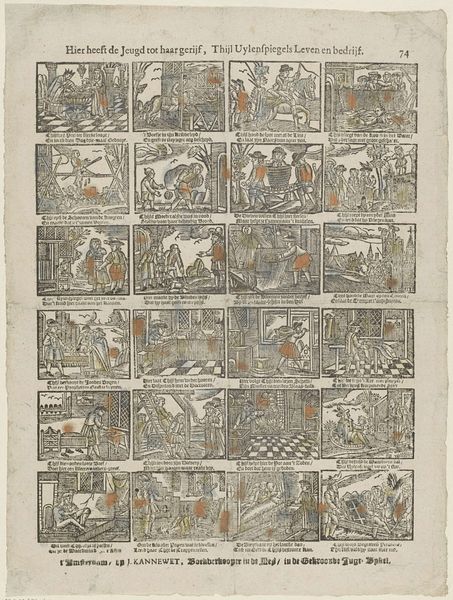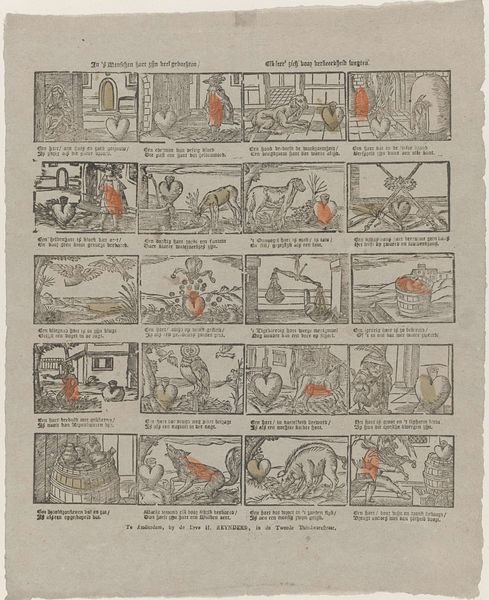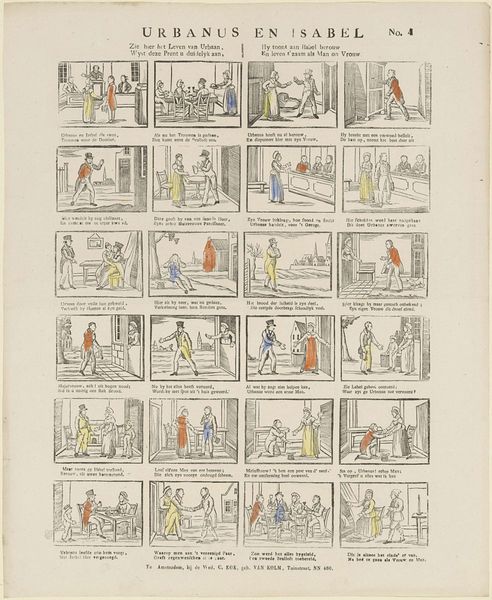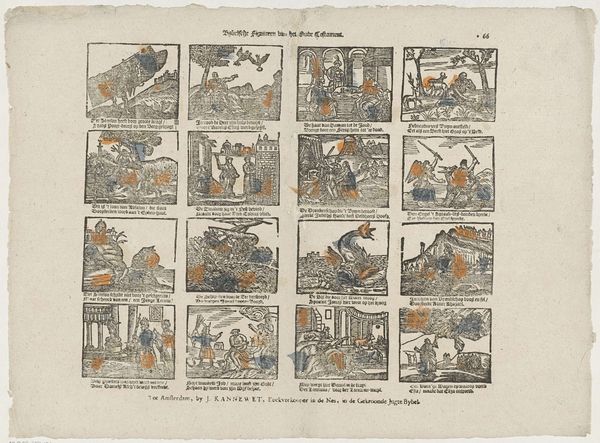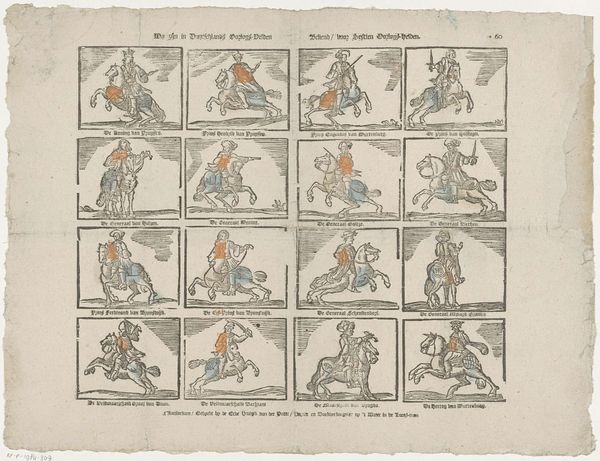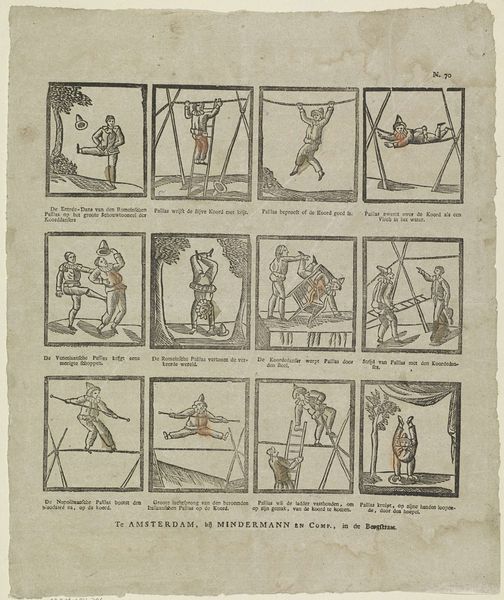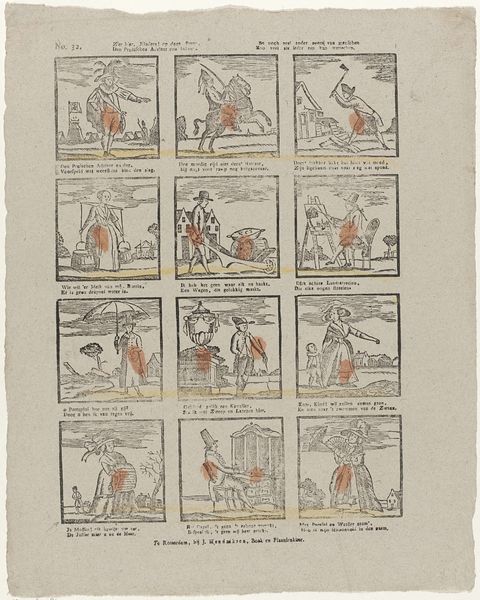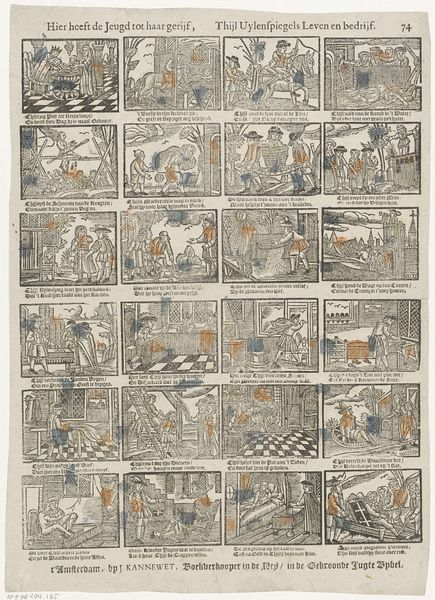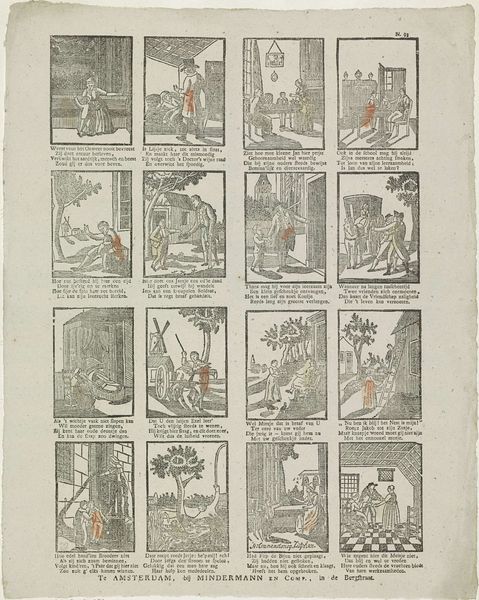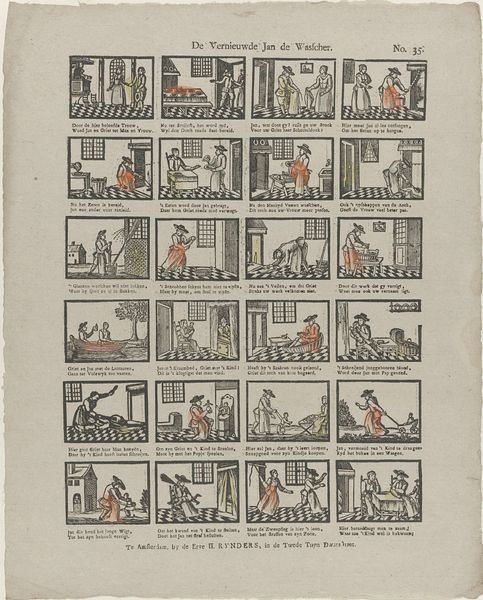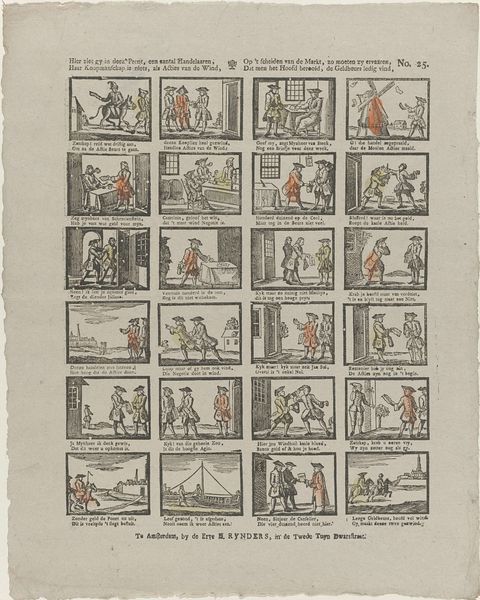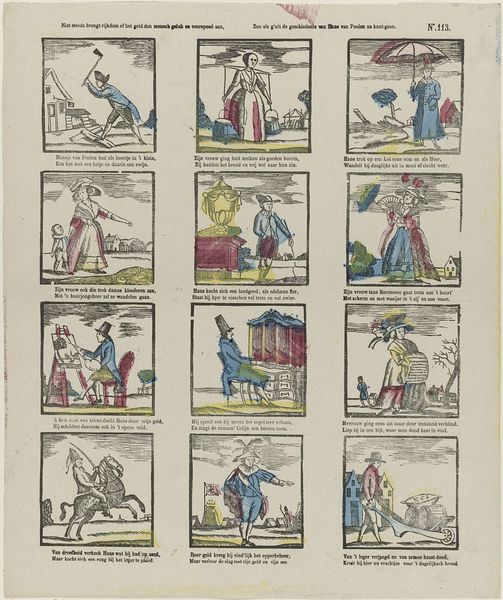
Hier hebt gy jonkheyd koen / Het leven en bedrijf / Van Cupidoos gedoen / Al tot uw tijdverdrijf 1725 - 1780
0:00
0:00
johannesiikannewet
Rijksmuseum
print, engraving
#
allegory
#
narrative-art
#
baroque
# print
#
engraving
Dimensions: height 427 mm, width 315 mm
Copyright: Rijks Museum: Open Domain
Curator: This engraving, dating from between 1725 and 1780, is entitled "Hier hebt gy jonkheyd koen / Het leven en bedrijf / Van Cupidoos gedoen / Al tot uw tijdverdrijf," and was created by Johannes (II) Kannewet. It's currently held at the Rijksmuseum. The work presents us with an allegorical depiction of Cupid's life. What's your immediate reaction? Editor: The visual rhythm is quite striking. The grid structure, with each small scene encased in its own box, is reminiscent of early comics. But there is a density that draws the eye to examine individual compartments. Curator: It's certainly dense, but also incredibly detailed, especially considering it’s a print. Kannewet seems to be exploring Cupid’s adventures. Each panel seems to reveal different stages or aspects of the god's influence. Notice how frequently some panels appear with some sort of water or seacraft Editor: Yes, and the consistency in the rendering of the figure of Cupid helps to create visual links across these small narrative episodes, wouldn’t you say? His winged form repeats within different settings—forest, water, architectural. And the limited palette – sepia tones highlighted by hints of color – enhances that sense of thematic unity. It creates a consistent atmosphere. Curator: Absolutely. Color can often be tied to class connotations too, sepia colors and sparse application could be commentary. These repetitive settings serve to highlight Cupid's ubiquitous role. What is your theory about the title’s connection to all this? Editor: Well, if we translate the title, "Here you have youthful courage / The life and deeds / Of Cupid's actions / All for your pastime," we see that the artist presents us with the adventures of Cupid meant as amusement. This may be because images of Eros as a very powerful primal deity has been sanitized for the purposes of commerce and a growing art audience. It seems fitting of the Baroque era—narrative richness combined with precise, elegant engraving. Curator: Precisely, viewing this print allows one to not only understand artistic values from that era but can inform psychological evaluations and what Cupid has come to represent today. This artwork is as compelling for its symbolism and storytelling, offering layers of insight into cultural narratives surrounding love and youthful escapades. Editor: I agree, considering form and its relationship with allegory reveals its enduring intrigue.
Comments
No comments
Be the first to comment and join the conversation on the ultimate creative platform.

